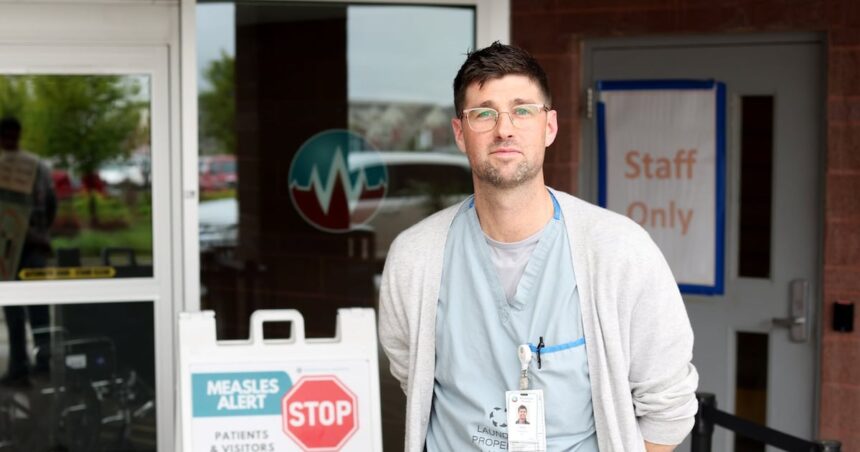In the fluorescent-lit hallways of Toronto’s Hospital for Sick Children, Dr. Maya Patel hasn’t seen her family for more than a few hours at a time in weeks. “I’ve been working 16-hour shifts since April,” she says, dark circles prominent beneath her eyes. “This isn’t just another outbreak—it’s a public health emergency we should never have faced again.”
Ontario’s measles outbreak has now infected over 200 people since March 2025, with cases continuing to rise weekly. The resurgence of this highly contagious disease, once considered effectively eliminated in Canada, has transformed emergency departments across the province into frontline battlegrounds where exhausted healthcare workers confront a preventable crisis.
“Every child I see with measles represents a failure of our public health system,” says nurse practitioner James Chen at Ottawa General Hospital. “The tragedy is that we have a safe, effective vaccine that prevents this suffering, yet here we are, watching children struggle to breathe.”
Provincial health data indicates that approximately 85% of current cases involve unvaccinated individuals, with the remaining infections occurring in partially vaccinated people or those with compromised immune systems. The outbreak has been traced to multiple international travel exposures that found fertile ground in communities with vaccination rates below the 95% threshold needed for herd immunity.
For Dr. Amina Hassan, an infectious disease specialist at Hamilton Health Sciences, the resurgence brings painful memories. “I trained in countries where measles was still common. I never thought I’d see these complications in Canada in 2025—encephalitis, pneumonia, children fighting for their lives from a disease we can prevent with two simple shots.”
The provincial government has responded by opening emergency vaccination clinics and launching an aggressive public awareness campaign. However, frontline workers argue these measures come too late for the current wave of patients.
“We’ve been warning about declining vaccination rates for years,” says Dr. David Moskowitz, Chief of Pediatrics at London Health Sciences Centre. “The pandemic disrupted routine immunization schedules, and the rise of vaccine hesitancy through social media misinformation created the perfect storm.”
The human cost extends beyond patient suffering. Healthcare workers describe the emotional toll of treating preventable illness while other medical needs go unaddressed.
Emergency nurse Sophia Williams from Sudbury Regional Hospital fought back tears during our interview. “Yesterday I had to tell parents their four-month-old baby needs to be intubated—too young to have received their first MMR dose. They did everything right, but their baby was exposed at a grocery store. Meanwhile, we’re cancelling surgeries because our resources are stretched so thin.”
Public health officials emphasize that the MMR vaccine is 97% effective at preventing measles after two doses. Ontario’s Ministry of Health has expedited vaccination programs in schools and community centers, particularly targeting areas with lower immunization rates.
Dr. Patel checks her pager and sighs before rushing back to the pediatric ICU. “The saddest part is watching parents realize too late that the misinformation they believed has real consequences. One mother told me yesterday she’d give anything to go back and vaccinate her child.”
As Ontario continues battling this outbreak, healthcare workers urge families to verify their vaccination status and seek immunization if needed. Community immunity depends on high vaccination rates, with each protected individual forming part of a shield for those who cannot receive vaccines due to age or medical conditions.
In a quiet moment between patients, nurse Chen poses a question that haunts many healthcare workers: “When we have the scientific knowledge and medical tools to prevent suffering, what does it say about our society that we’re allowing these preventable diseases to return?”











